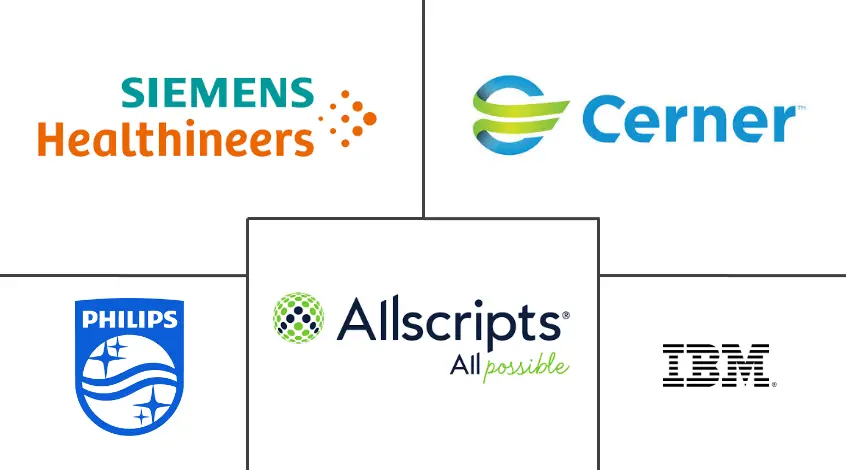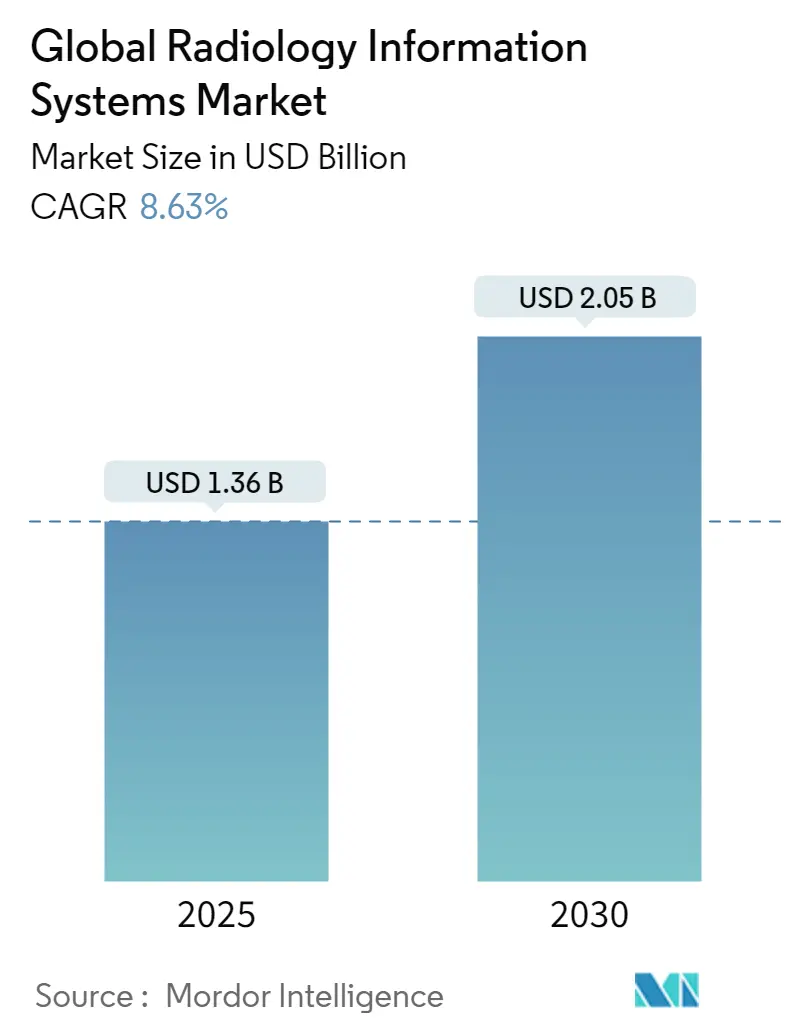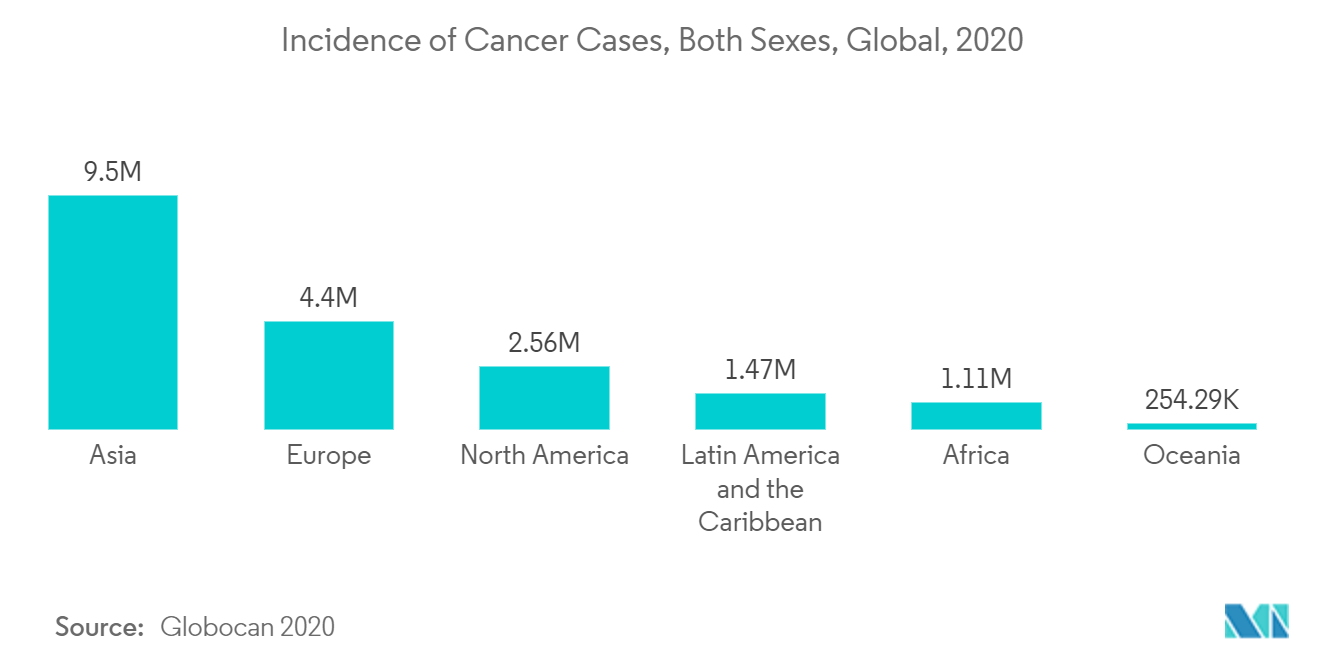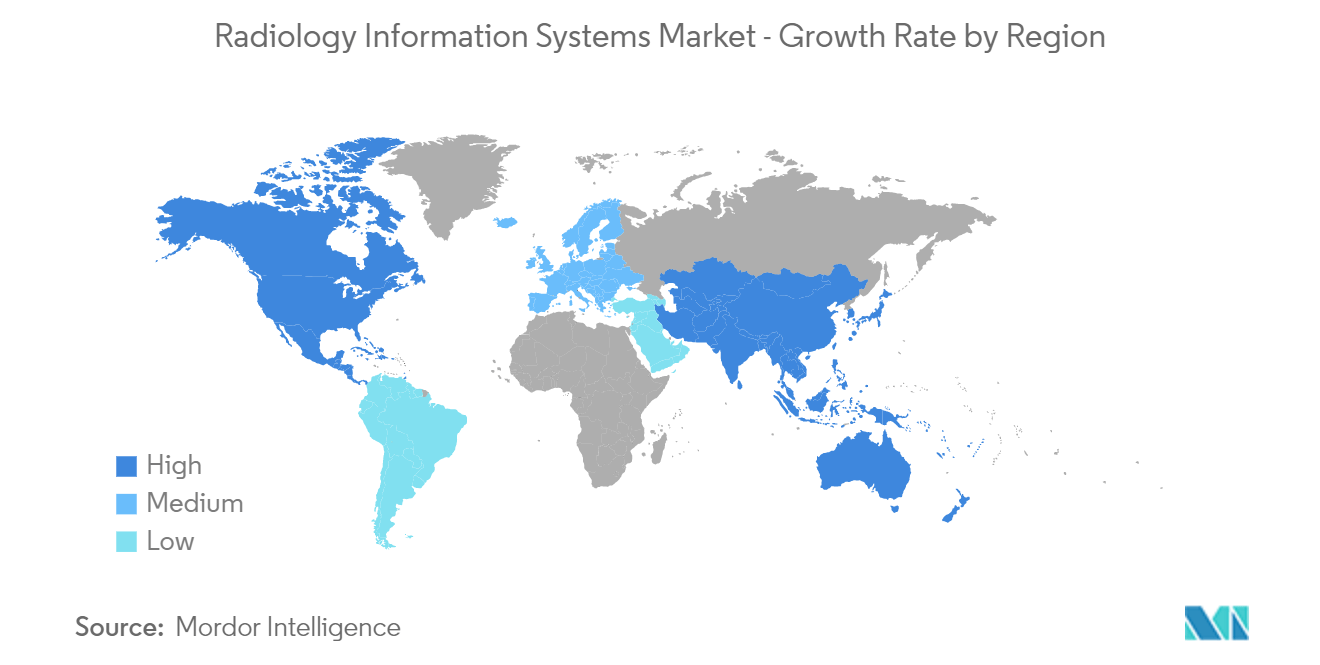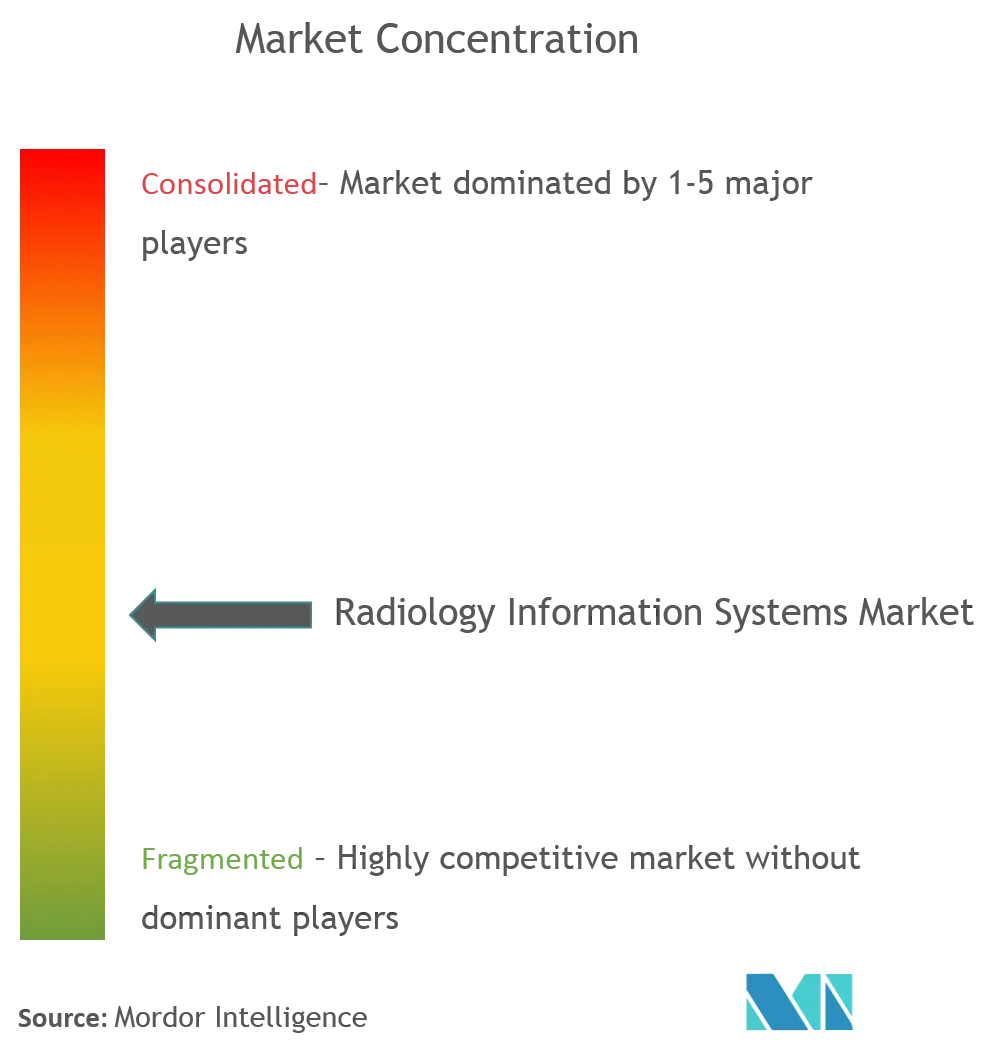Radiology Information Systems Market Analysis
The Global Radiology Information Systems Market size is estimated at USD 1.36 billion in 2025, and is expected to reach USD 2.05 billion by 2030, at a CAGR of 8.63% during the forecast period (2025-2030).
COVID-19 is expected to have a significant impact on the radiology information system market. According to a research article "The Economic Impact of the COVID-19 Pandemic on Radiology Practices" published in the Radiological Society of North America in April 2020, the policy measures adopted to slow the transmission of COVID-19 were decreasing the demand for imaging services. The guidelines from the Centers for Disease Control and Prevention to postpone emergency outpatient visits during the height of the pandemic had a great impact on screening services such as mammography and lung cancer screening, and the impact has been observed throughout the sector, including interventional procedures. This is likely to have affected the demand for radiology information systems as they are used to analyze data from radiology units. With the current easing of norms and the start of vaccination programs, the market is expected to see a positive trend in a few months.
The major factors for the growth of the market include growth in the incidence rate of chronic diseases, improved access to healthcare information technology systems, and the increase in government funding for cancer-related research. Additionally, the burden of chronic diseases is on the rise across the globe, coupled with the rising aging population, and lifestyle-related disorders, such as cancer, arthritis, cardiovascular, and diabetes, are some of the primary factors responsible for the growth of this market.
According to the United Nations' World Population Ageing 2022 highlights, the share of the global population aged 65 years or above is projected to rise from 10% in 2022 to 16% in 2050. By 2050, the number of persons aged 65 years or over worldwide is projected to be more than twice the number of children under age 5 and about the same as the number of children under age 12. The geriatric population is highly prone to several complex and chronic diseases, which is expected to drive the demand for radiology services and have a positive impact on the studied market. According to Globocan 2020, an estimated 19,292,789 new cancer cases and 9,958,133 deaths due to cancers were reported in 2020 worldwide. An increase in cancer cases will lead to an increase in focus on radiology services for proper diagnosis, which is expected to drive the market demand for radiology information systems. The increasing incidence rate of chronic diseases like cancer is driving the demand for radiology information systems in the market.
As per a research article published in Eurostat Statistics July 2021, for CT scanners, there were 277 scanners in Belgium, 101 scanners in Ireland, 167 in Norway, and 85 in Serbia in 2020. For MRI scanners, there were 132 scanners in Belgium, 102 in Norway, 32 in Serbia, and 28 in Slovenia. The statistics also indicated that the number of CT and MRI scanners increased as compared to 2019, indicating growing demand for radiology procedures, thus boosting the demand for technologically advanced products and services and hence driving the radiology information systems market.
Additionally, the launch of new products and adoption of key strategies such as partnerships, investments, acquisitions, and others is expected to drive the studied market. For instance, in May 2022, FUJIFILM Healthcare Americas Corporation partnered with RAYUS Radiology and deployed Fujifilm's Synapse Enterprise Information System (EIS) as the workflow management solution for its comprehensive network of over 150 imaging centers across the United States. This indicates that the adoption of radiology information systems is increasing in developed countries such as the United States, thus leading to lucrative growth of the market.
An increase in radiology procedures, coupled with the increase in accessibility to these services, is expected to have a positive impact on the radiology information system market. However, the high cost of installation and scarcity of skilled labor is expected to hinder the market growth during the study period.
Radiology Information Systems Market Trends
The Cloud-based Segment is Expected to Witness High Growth over the Forecast Period
The modernization of operations and approaches by utilizing technology solutions, such as radiology information systems and analytical sources, has significantly improved healthcare organizations and facilities. Images and reports are now being transmitted digitally via PACS (Picture archiving and communication system) by integrating the system with the radiology information system (RIS) and hospital information system (HIS). This integration eliminates the need to manually store, retrieve, and display film jackets. Given these benefits, most healthcare systems are shifting toward the adoption of radiology information systems, which is expected to drive market growth over the forecast period.
Cloud-hosted services are quite cheap as compared to the direct purchase model. This is because they allow users to subscribe to the latest version of a radiology information system at a lower price rather than purchasing the complete model. Since cloud-based systems store data on external servers, they can be easily accessed over the web and require only a computer with an internet connection for optimal working. Cloud-based delivery helps healthcare providers and patients access information at any time. As cloud-based radiology information systems are more cost-effective, they are particularly suitable for small to medium-sized hospitals, as they cannot afford large hardware expenditures.
Cloud-based radiology information systems also allow medical practitioners and physicians to control access to sensitive information. The launch of a new cloud-based radiology information system will augment the segment growth. For instance, in December 2021, Sirona Medical launched a cloud-native radiology operating system (RadOS) at the 2021 Annual Meeting for the Radiological Society of North America (RSNA). The unified workspace platform was developed based on the principle that technology, and AI, in particular, should augment the intelligence of the physician. This software aims at simplifying a radiologist's work resulting in a better user experience and work product.
Thus, due to the multiple benefits associated with cloud-based systems, the market is expected to witness high growth over the forecast period.
North America is Expected to Hold a Significant Market Share Over the Forecast Period
North America is expected to hold a major market share in the radiology information systems market due to increasing cases of chronic diseases and rising healthcare expenditure.
According to the estimates of Globocan 2020, there were around 195,499 new cases of cancer in Mexico. During the same time, around 90,222 deaths occurred due to cancer in the country. The rising prevalence of chronic diseases like cancer is expected to propel the market, as cancer diagnosis relies heavily on advanced radiology imaging technology. The data from these radiology systems are analyzed and stored in radiology information systems.
Medical imaging procedures make an invaluable contribution to the examination, diagnosis, monitoring/documentation, and treatment of medical conditions. Radiology information systems are then used for patient administration, examination, reporting, statistics, and system administration, which displays, stores, retrieves, transfers, exchanges, and prints radiology orders, results, and reports.
Companies in the region are partnering with major radiology service providers for market growth. Other strategic initiatives and milestones achieved by major players, along with the launch of new products and technological innovation, are expected further drive the market in the region. For instance, in July 2021, FUJIFILM Medical Systems U.S.A, Inc. reported that the next-generation Synapse Enterprise Information System (EIS) had been selected by United States Radiology Specialists to drive efficient and high-quality patient care across its network. Synapse Radiology Information System (RIS) is a comprehensive workflow management solution designed to streamline physician communication, improve patient interaction, and alleviate the mentioned administrative burden for the outpatient imaging market.
Thus, due to the abovementioned factors, the studied market is expected to experience significant growth during the study period.
Radiology Information Systems Industry Overview
The radiology information systems market is moderately competitive. In terms of market share, a few of the major players are currently dominating the market. Some of the market players are Allscripts Healthcare Solutions Inc., Cerner Corporation, Epic Systems Corporation, GE Healthcare, IBM (Merge Healthcare Incorporated), Koninklijke Philips NV, Mckesson Corporation, Medinformatix Inc., and Siemens Healthineers, among others.
Radiology Information Systems Market Leaders
-
Allscripts Healthcare Solutions Inc.
-
Cerner Corporation
-
IBM (Merge Healthcare Incorporated)
-
Koninklijke Philips N.V.
-
Siemens Healthineers
- *Disclaimer: Major Players sorted in no particular order
Radiology Information Systems Market News
- In March 2022, Intelerad Medical Systems launched the Enterprise Imaging and Informatics Suite at the 2022 Healthcare Information and Management Systems Society (HIMSS) Global Health Conference and Exhibition, which may provide radiologists with an emerging option for medical image management.
- In February 2022, Carestream Health India launched the DRX Compass, an accurate, convenient, and configurable digital radiology solution designed to provide radiologists with a whole new level of efficiency.
Radiology Information Systems Industry Segmentation
As per the scope of the report, the radiology information system is a computer system that provides business analysis and effective workflow in the radiology department. The system helps in managing all the business functions of the department, from patient management and analysis to inventory control. These systems are easy to use and are easily accessible. They offer benefits, such as high security, reliability, and privacy, and can be accessed by only authorized users. The Radiology Information Systems Market is segmented by Type (Integrated Radiology Information System, and Stand-alone Radiology Information System), by Deployment Mode (On-premise and Cloud-based), by Component (Hardware, Software, and Services), and Geography (North America, Europe, Asia-Pacific, Middle-East and Africa, and South America). The market report also covers the estimated market sizes and trends for 17 countries across major regions globally. The report offers the value (USD million) for the above segments.
| By Type | Integrated Radiology Information System | ||
| Stand-alone Radiology Information System | |||
| By Deployment Mode | On-premise | ||
| Cloud-based | |||
| By Component | Hardware | ||
| Software | |||
| Services | |||
| Geography | North America | United States | |
| Canada | |||
| Mexico | |||
| Europe | Germany | ||
| United Kingdom | |||
| France | |||
| Italy | |||
| Spain | |||
| Rest of Europe | |||
| Asia-Pacific | China | ||
| Japan | |||
| India | |||
| Australia | |||
| South Korea | |||
| Rest of Asia-Pacific | |||
| Middle-East and Africa | GCC | ||
| South Africa | |||
| Rest of Middle-East and Africa | |||
| South America | Brazil | ||
| Argentina | |||
| Rest of South America | |||
Radiology Information Systems Market Research FAQs
How big is the Global Radiology Information Systems Market?
The Global Radiology Information Systems Market size is expected to reach USD 1.36 billion in 2025 and grow at a CAGR of 8.63% to reach USD 2.05 billion by 2030.
What is the current Global Radiology Information Systems Market size?
In 2025, the Global Radiology Information Systems Market size is expected to reach USD 1.36 billion.
Who are the key players in Global Radiology Information Systems Market?
Allscripts Healthcare Solutions Inc., Cerner Corporation, IBM (Merge Healthcare Incorporated), Koninklijke Philips N.V. and Siemens Healthineers are the major companies operating in the Global Radiology Information Systems Market.
Which is the fastest growing region in Global Radiology Information Systems Market?
Asia Pacific is estimated to grow at the highest CAGR over the forecast period (2025-2030).
Which region has the biggest share in Global Radiology Information Systems Market?
In 2025, the North America accounts for the largest market share in Global Radiology Information Systems Market.
What years does this Global Radiology Information Systems Market cover, and what was the market size in 2024?
In 2024, the Global Radiology Information Systems Market size was estimated at USD 1.24 billion. The report covers the Global Radiology Information Systems Market historical market size for years: 2019, 2020, 2021, 2022, 2023 and 2024. The report also forecasts the Global Radiology Information Systems Market size for years: 2025, 2026, 2027, 2028, 2029 and 2030.
Our Best Selling Reports
Radiology Information System Industry Report
Statistics for the 2025 Global Radiology Information Systems market share, size and revenue growth rate, created by Mordor Intelligence™ Industry Reports. Global Radiology Information Systems analysis includes a market forecast outlook for 2025 to 2030 and historical overview. Get a sample of this industry analysis as a free report PDF download.

